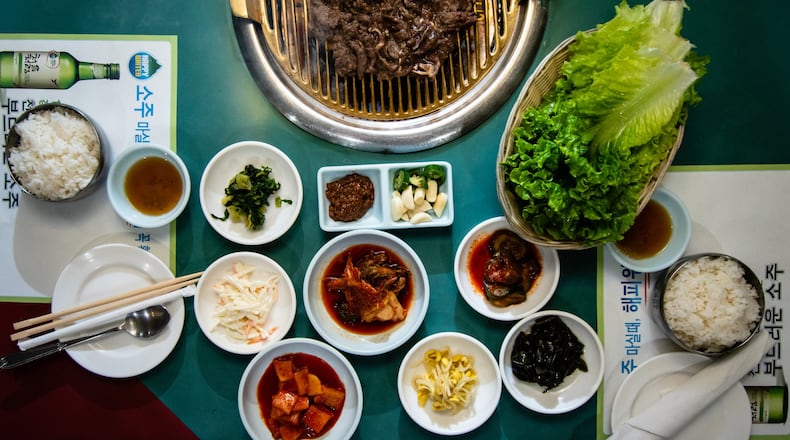Korean barbecue isn’t just about the meat. What makes it fun and interactive are the fixin’s, known as banchan: toppings, condiments, sauces and flavorings. Ask your server to give you an overview.
The proper technique for eating KBBQ involves building individual bites that might seem too large by the standards of American table manners. Using either a lettuce wrap or a spoon as your foundation, start with a small amount of sticky white rice, which helps keep everything in place. Dip your protein into the sesame oil and add it to the rice.
Next, start picking out your banchan. You might be familiar with kimchi (spicy pickled cabbage), shown in the center of the photo above. Just above that is doenjang, the fermented bean paste similar to miso. Add a little of it to every bite. At the bottom right is miyeok muchim, a vinegary seaweed salad that is an excellent complement to rich bulgogi — thinly shaved slices of beef marinated in a sweet-savory sauce, then grilled. Often, there will be vegetables on the grill that can be added to your bite as well.
.
About the Author
Keep Reading
The Latest
Featured


